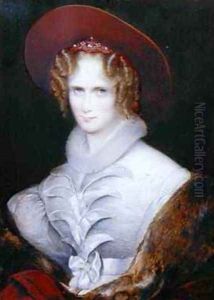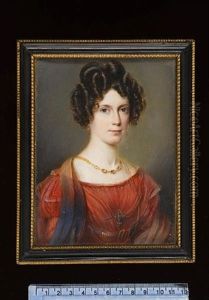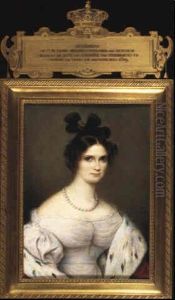August Grahl Paintings
August Grahl was a German portrait painter and miniaturist, born on January 26, 1791, in Groß Schönfeld, Mecklenburg-Schwerin. He was most notably recognized for his mastery in painting on ivory, a popular medium for miniature portraits during his time. His work was characterized by its fine detail, luminosity, and expressive character portrayal, which made it highly sought after among the nobility and affluent society of 19th-century Europe.
Grahl initially trained under the guidance of portrait painter Johann Heinrich Schmidt in Schwerin. His talent and ambition led him to further his studies at the Academy of Arts in Dresden, where he was influenced by the works of the great masters. Grahl's style continued to evolve as he became more involved with the Dresden art scene, which was a vibrant center for artists in the early 19th century. His reputation grew, and he was commissioned to create portraits for various royal families, including the court of Saxony.
Throughout his career, Grahl traveled extensively, which allowed him to establish a broad clientele. He spent significant periods in cities such as Vienna, Rome, and St. Petersburg. In each city, he absorbed new influences and honed his skills, which contributed to the refinement of his technique. His portraits were not only appreciated for their likeness but also for the way they captured the personality and essence of the subject.
August Grahl's contribution to the art of miniature painting was significant in that he helped to maintain the relevance of the form well into the 19th century, at a time when large-scale paintings were becoming more popular. His miniatures have been compared to those of the famous Jean-Baptiste Isabey, a contemporary French miniaturist. Despite the emergence of photography, Grahl's miniatures remained in demand due to their unique artistic value.
Grahl's life was one of constant learning and adaptation. He remained active in his field until his later years, leaving behind a legacy of exquisite miniature portraits that continue to be admired for their clarity and depth. August Grahl died on December 21, 1868, in Dresden. Today, his works can be found in various art collections and museums, testament to the lasting appeal of his artistry.











